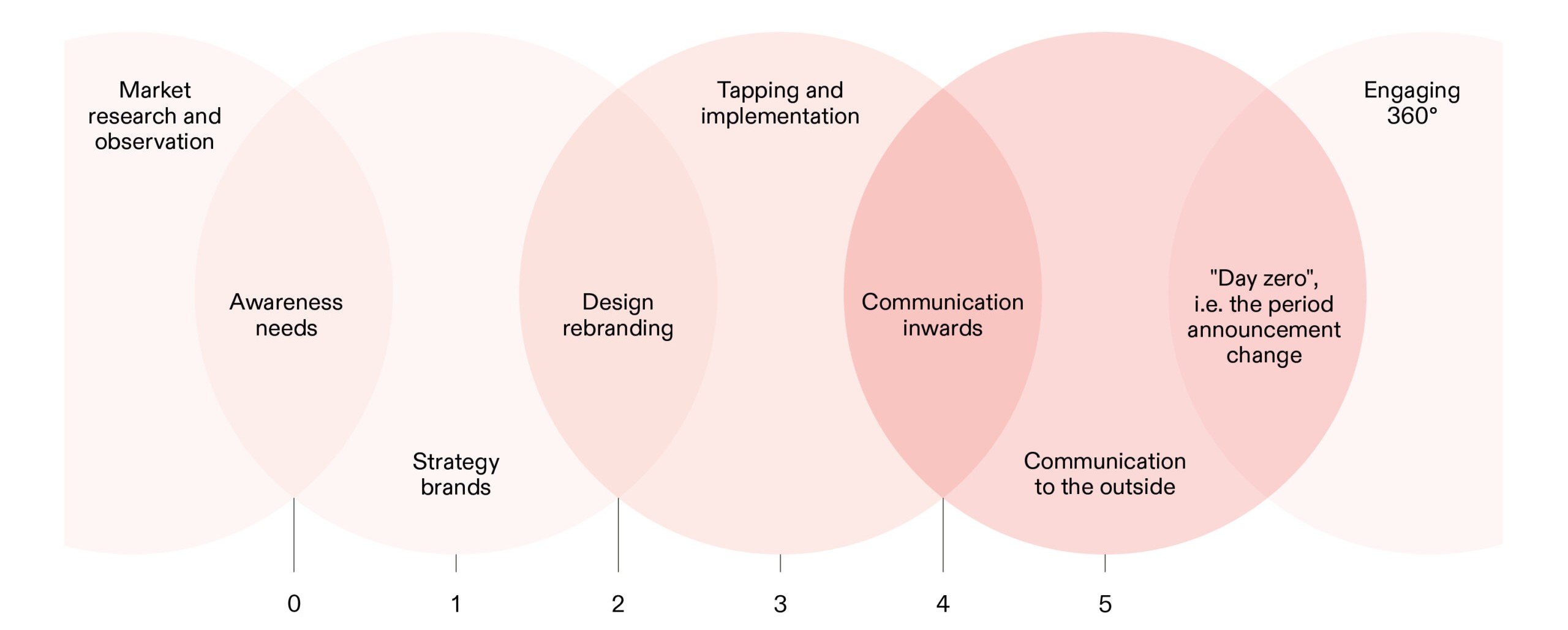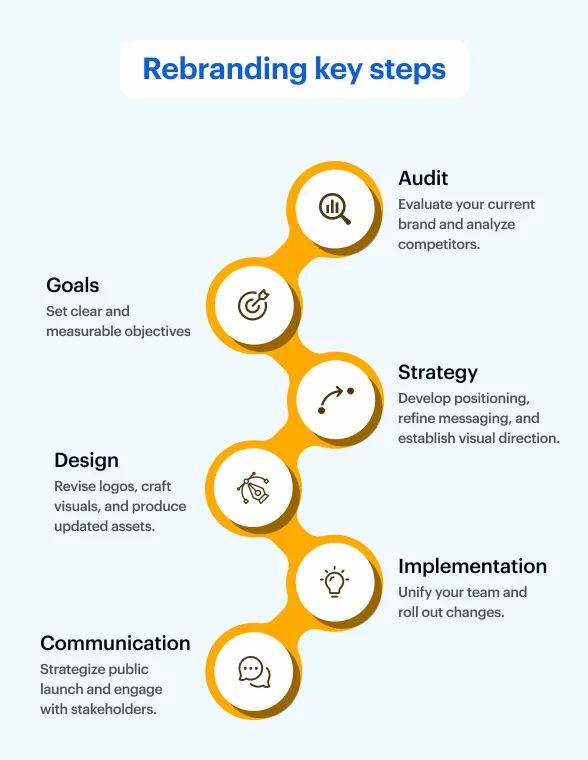Rebranding: When and How to Refresh Your Brand
In today’s fast-paced market, brands must remain relevant and resonate with their target audience. Over time, businesses may find that their brand no longer aligns with their values, market position, or consumer expectations. Rebranding can be a powerful strategy to rejuvenate a brand’s image and appeal. This guide will help you recognize the signs that indicate the need for rebranding and provide a step-by-step approach to execute a successful rebranding strategy.
Recognizing the Need for Rebranding
- Shift in Market Position
- Your business has evolved, but your brand hasn’t kept pace. If you’ve expanded your offerings or shifted your target market, your brand should reflect these changes.
- Negative Perception or Reputation
- If your brand is associated with negative perceptions or past controversies, rebranding can help rebuild trust and improve your public image.

Print
- If your brand is associated with negative perceptions or past controversies, rebranding can help rebuild trust and improve your public image.
- Outdated Visual Identity
- Trends in design change over time. If your logo, color scheme, or overall visual identity feels outdated, it may be time for a refresh.
- Mergers and Acquisitions
- When companies merge or are acquired, rebranding can create a unified brand that represents the new entity and its combined values.
- Global Expansion
- Entering new international markets often requires adjustments in branding to cater to diverse cultural preferences and expectations.
- Change in Company Values or Mission
- As companies grow, their core values and mission can evolve. Rebranding ensures that your brand message aligns with your current ethos.
Steps to Execute a Successful Rebrand
- Conduct a Brand Audit
- Evaluate your current brand’s strengths, weaknesses, and market position. Gather stakeholder, employee, and customer feedback to understand their perceptions and expectations.
- Define Your Rebrand Objectives
- Clearly outline the goals of your rebrand. Whether it’s to enter a new market, update your image, or improve customer perception, having clear objectives will guide your strategy.
- Research Your Target Audience
- Understand the needs, preferences, and behaviours of your target audience. This will help you create a brand that resonates with them.
- Develop Your Brand Strategy
- Define your brand’s new positioning, values, and messaging. Ensure that these elements are consistent across all touchpoints.

- Define your brand’s new positioning, values, and messaging. Ensure that these elements are consistent across all touchpoints.
- Create a New Visual Identity
- Work with designers to develop a modern, cohesive visual identity. This includes your logo, color palette, typography, and other design elements.
- Plan Your Brand Rollout
- Develop a detailed plan for launching your new brand. This includes updating your website, social media profiles, marketing materials, and other branded assets.
- Communicate with Stakeholders
- Inform your employees, partners, and stakeholders about the rebrand. Provide them with the necessary tools and information to represent the new brand effectively.
- Launch Your Rebrand
- Execute a coordinated launch of your new brand. Use marketing campaigns, press releases, and events to generate buzz and communicate the changes to your audience.
- Monitor and Adjust
- After the launch, monitor the performance of your new brand. Gather feedback and be prepared to make adjustments as needed to ensure its success.
Conclusion
Rebranding is a significant undertaking that can breathe new life into a business, helping it stay relevant and competitive. By recognizing the signs indicating the need for rebranding and following a strategic approach, businesses can successfully navigate the rebranding process and create a brand that reflects their values, mission, and market position. Remember, a successful rebrand is not just about a new logo or tagline; it’s about creating a cohesive and compelling brand identity that resonates with your audience and drives your business forward.

